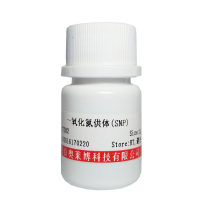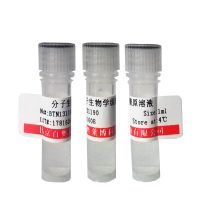
产品详情
文献和实验
相关推荐
Accutase-Solution,C-41310,PromoCell:
产品介绍:
Accutase is a sterile filtered ready-to-use detachment solution and can also be used for tissue dissociation. It was developed for very gentle and effective detachment of adherent cells. The well balanced combination of proteolytic and collagenolytic enzymes ensures that surface proteins and epitopes stay entirely intact. Accutase is therefore perfectly suited for applications, which require an unchanged cell surface.
Each batch of the PromoCell Accutase-Solution is tested on primary human cells. Accutase is supplied in Dulbecco´s PBS containing 0.5 mM EDTA
常见问题:
1.What’s the difference between trypsin and accutase?
Both, trypsin and accutase represent mixtures of different proteolytic enzymes. Trypsin is prepared from porcine pancreas, accutase from invertebrates. Accutase can replace trypsin for the detachment and dissociation of anchorage-dependent cells from surfaces and can also be used on suspension cells to reduce clumping in preparation for counting. The advantages of accutase over the traditional trypsin treatment are that it is more gentle and less damaging to cells (leading to increased viability) and does not contain any mammalian or bacterially derived proteins. Accutase is more thermolabile than trypsin and usually doesn’t require an inactivation step.
2.How should I use accutase for cell detachment?
Short protocol:
- Wash the cells with sterile PBS or HepesBSS
- Add undiluted accutase to culture vessel (2 ml per 25 cm2)
- Incubate at room temperature for 5-15 min or at 37°C for faster detachment
- When the majority of the cells has detached, centrifuge the suspension and resuspend the pellet in fresh medium. In most cases no additional washes or neutralization steps are required.
3.Can I use accutase solution instead of trypsin to detach the cells?
Yes, you can use accutase to detach Normal Human Cells. Accutase acts very gently on the cells. Cell membranes and surface epitopes will not be harmed. It is therefore mostly used for applications that require unchanged surface markers, e.g. for flow cytometry, or for detachment of very sensitive cells.
4.How long does it take to detach primary cells with accutase (C-41310)?
Most primary cells detach within 5-10 min at 37°C. Inactivation isn’t required but we recommend to centrifuge the cell suspension to remove accutase and EDTA before replating the cells.
5.What is the difference between “population doublings” (PD) and “passage”?
A population doubling (PD) is a two-fold increase in the total number of cells during in vitro-culture. Calculating the number of PDs a culture has performed at a certain point gives an accurate measure of its age.
In contrast, the term passage merely refers to the subculturing process, i.e. the detachment of the cells from a culture vessel (using eg. trypsin/EDTA or accutase) and replating them at a lower density to allow for further cell growth. The term passage does not take into account the different split ratios that can be applied. Different split ratios produce cultures with an identical number of passages but a varying number of doublings. Passage is therefore only a rough estimate of the actual age of a culture.
6.What is the trypsinization time with PromoCell keratinocytes?
The trypsinization time of primary keratinocytes (and epithelial cells in general) is usually longer than of other cells. Depending on the cell lot, it takes between 5 and 10 min at room temperature. You can accelerate the detachment by gently tapping the flask as soon as the cells shrink and round up. Alternatively, you can use accutase (C-41310) at 37°C which has been shown to not affect cellular viability even at longer incubation times.

北京兰博康斯科技有限公司
实名认证
金牌会员
入驻年限:11年







